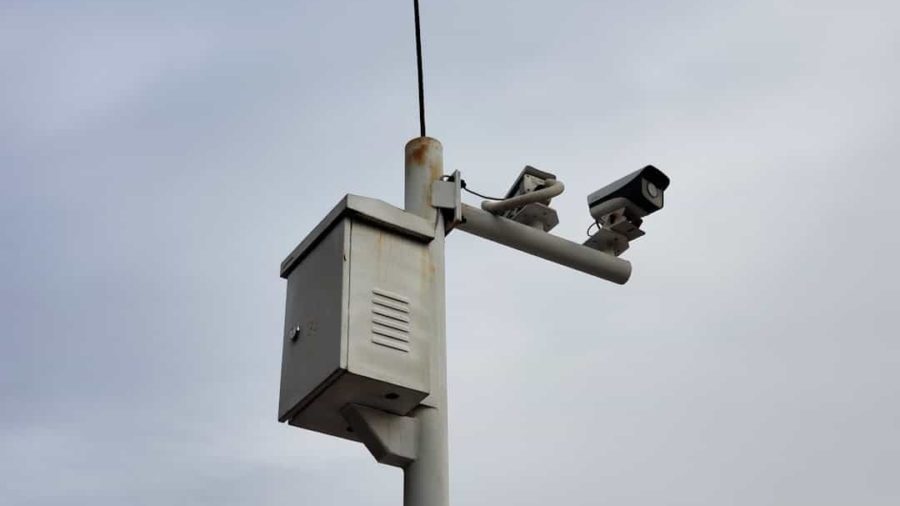Artificial Intelligence (AI) surveillance tools have emerged as a transformative force in the realm of security and monitoring. These technologies leverage advanced algorithms and machine learning techniques to analyze vast amounts of data, enabling real-time monitoring and decision-making. From facial recognition systems deployed in public spaces to predictive policing algorithms that assess crime hotspots, AI surveillance tools are increasingly integrated into various sectors, including law enforcement, transportation, and even private enterprises.
The proliferation of these technologies has sparked a significant debate about their implications for society, particularly concerning privacy, ethics, and civil liberties. The rapid advancement of AI surveillance tools can be attributed to several factors, including the exponential growth of data generation, improvements in computational power, and the increasing sophistication of machine learning models. For instance, the ability to process video feeds from thousands of cameras simultaneously allows law enforcement agencies to identify suspects or track movements with unprecedented efficiency.
However, this efficiency comes at a cost, raising critical questions about the balance between security and individual rights. As these tools become more prevalent, it is essential to examine their ethical implications and the potential consequences for society as a whole.
Key Takeaways
- AI surveillance tools are becoming increasingly prevalent in various industries and sectors, offering advanced capabilities for monitoring and analyzing data.
- Ethical concerns in AI surveillance revolve around issues of consent, transparency, and potential misuse of the technology for surveillance and control.
- Privacy and data protection are critical considerations in the development and deployment of AI surveillance tools, as they involve the collection and processing of sensitive personal information.
- Bias and discrimination in AI surveillance can arise from the use of biased data sets or algorithms, leading to unfair targeting and profiling of certain groups.
- Transparency and accountability are essential for ensuring the responsible and ethical use of AI surveillance tools, requiring clear guidelines and oversight mechanisms.
Ethical Concerns in AI Surveillance
The ethical concerns surrounding AI surveillance tools are multifaceted and complex. One of the primary issues is the potential for infringing on individual rights and freedoms. Surveillance technologies can create an environment of constant monitoring, leading to a chilling effect on free expression and assembly.
Citizens may feel deterred from participating in protests or expressing dissenting opinions if they know they are being watched. This raises fundamental questions about the role of surveillance in a democratic society and whether the benefits of enhanced security justify the erosion of civil liberties. Moreover, the deployment of AI surveillance tools often lacks adequate oversight and accountability mechanisms.
Many systems operate as “black boxes,” where the decision-making processes are opaque even to those who implement them. This lack of transparency can lead to abuses of power, as authorities may misuse surveillance data for purposes beyond their intended scope. For example, there have been instances where law enforcement agencies have used facial recognition technology to track individuals involved in peaceful protests, raising alarms about the potential for authoritarian practices.
The ethical implications of such actions necessitate a thorough examination of how these tools are developed, implemented, and monitored.
Privacy and Data Protection

Privacy concerns are at the forefront of discussions surrounding AI surveillance tools. The collection and storage of personal data raise significant questions about consent and individual autonomy. In many cases, individuals are unaware that they are being monitored or that their data is being collected.
This lack of informed consent undermines the foundational principles of privacy rights. For instance, smart city initiatives often involve extensive surveillance systems that gather data from various sources, including public cameras and social media platforms.
Data protection is another critical aspect of the privacy debate. The vast amounts of data collected by AI surveillance tools can be vulnerable to breaches and misuse. High-profile incidents of data leaks have demonstrated that even well-intentioned organizations can fall victim to cyberattacks, exposing sensitive information about individuals.
The implications of such breaches can be severe, leading to identity theft, harassment, or even wrongful arrests based on flawed data. As AI surveillance tools continue to evolve, robust data protection measures must be implemented to safeguard individuals’ information and ensure that it is used responsibly.
Bias and Discrimination in AI Surveillance
One of the most pressing issues related to AI surveillance tools is the potential for bias and discrimination embedded within these systems. Machine learning algorithms are trained on historical data, which can reflect existing societal biases. If these biases are not adequately addressed during the development phase, AI systems may perpetuate or even exacerbate discrimination against marginalized groups.
For example, studies have shown that facial recognition technology tends to misidentify individuals with darker skin tones at higher rates than those with lighter skin tones. This disparity raises concerns about the fairness and accuracy of AI surveillance tools in law enforcement contexts.
When law enforcement agencies rely on biased algorithms for predictive policing or suspect identification, they may disproportionately target specific communities based on flawed data interpretations. This can result in over-policing in certain neighborhoods while neglecting others, further entrenching existing inequalities within the criminal justice system. Addressing bias in AI surveillance requires a concerted effort from developers, policymakers, and civil society to ensure that these technologies are designed and implemented equitably.
Transparency and Accountability in AI Surveillance
Transparency and accountability are crucial components in addressing the ethical challenges posed by AI surveillance tools. For these technologies to be accepted by the public, there must be clear guidelines regarding their use and oversight mechanisms to hold authorities accountable for their actions. Transparency involves not only disclosing how these systems operate but also providing insight into the data sources used for training algorithms and the criteria for decision-making processes.
Without transparency, it becomes challenging for individuals to understand how their rights may be impacted by surveillance practices. Accountability mechanisms are equally important in ensuring that AI surveillance tools are used responsibly. This includes establishing independent oversight bodies that can review the deployment and effectiveness of these technologies while investigating complaints related to misuse or abuse.
For instance, some jurisdictions have implemented policies requiring law enforcement agencies to report on their use of facial recognition technology, including data on accuracy rates and instances of wrongful identification. Such measures promote accountability and help build public trust in AI surveillance systems by demonstrating a commitment to ethical practices.
Potential Misuse of AI Surveillance Tools

The potential for misuse of AI surveillance tools is a significant concern that cannot be overlooked. While these technologies can enhance security and public safety, they also present opportunities for abuse by both state actors and private entities. For example, authoritarian regimes may employ AI surveillance to monitor dissenters, suppress free speech, or target political opponents.
The use of advanced surveillance technologies in such contexts raises alarms about human rights violations and the erosion of democratic principles. In addition to state misuse, there is also a risk that private companies may exploit AI surveillance tools for profit-driven motives without regard for ethical considerations. Companies may collect vast amounts of personal data through surveillance systems for targeted advertising or other commercial purposes without adequately informing users or obtaining their consent.
This commodification of personal information raises ethical questions about ownership and control over one’s data. As AI surveillance tools become more integrated into everyday life, it is essential to establish safeguards against potential misuse that protect individuals’ rights while allowing for legitimate security applications.
Regulation and Governance of AI Surveillance
The regulation and governance of AI surveillance tools are critical in addressing the ethical challenges associated with their use. As these technologies continue to evolve rapidly, existing legal frameworks often struggle to keep pace with their development. Policymakers face the daunting task of creating regulations that balance innovation with the protection of individual rights.
Effective governance requires collaboration among various stakeholders, including government agencies, technology developers, civil society organizations, and affected communities. One approach to regulation involves establishing clear guidelines for the deployment and use of AI surveillance tools within law enforcement agencies. This could include requirements for transparency in algorithmic decision-making processes, regular audits to assess accuracy and bias, and strict limitations on data retention periods.
Additionally, public engagement is essential in shaping regulatory frameworks that reflect societal values and priorities regarding privacy and security. By involving diverse voices in the conversation around AI surveillance governance, policymakers can create more equitable regulations that address public concerns while fostering technological advancement.
Ethical Guidelines for the Development and Use of AI Surveillance Tools
Developing ethical guidelines for AI surveillance tools is paramount in ensuring that these technologies serve society positively while minimizing harm. These guidelines should encompass principles such as fairness, accountability, transparency, privacy protection, and respect for human rights. For instance, developers should prioritize creating algorithms that are free from bias by employing diverse training datasets and conducting thorough testing before deployment.
Additionally, organizations should implement robust data protection measures to safeguard individuals’ information from unauthorized access or misuse. Furthermore, ethical guidelines should emphasize the importance of public engagement throughout the development process. Stakeholder consultations can provide valuable insights into community concerns regarding surveillance practices and help shape technologies that align with societal values.
By fostering an inclusive dialogue around AI surveillance tools’ ethical implications, developers can create systems that not only enhance security but also uphold fundamental rights and freedoms. Ultimately, establishing comprehensive ethical guidelines will be crucial in navigating the complex landscape of AI surveillance while promoting responsible innovation.
In the ongoing discourse about the ethical boundaries of AI surveillance tools, it is crucial to consider the broader context of technological advancements and their implications. An interesting related article is Discover the Best Free Software for Voice Recording Now, which explores the capabilities of modern voice recording software. This article highlights how advancements in voice recording technology can intersect with AI surveillance, raising questions about privacy and consent. As we delve into the ethical considerations of AI surveillance, understanding the tools and technologies that contribute to these systems is essential for a comprehensive analysis.
FAQs
What are AI surveillance tools?
AI surveillance tools are technologies that use artificial intelligence to monitor and analyze human behavior, often through the use of cameras, sensors, and other data collection methods. These tools can be used for various purposes, including security, law enforcement, and marketing.
What are the ethical boundaries of AI surveillance tools?
The ethical boundaries of AI surveillance tools revolve around issues such as privacy, consent, discrimination, and the potential for abuse. There are concerns about the invasion of privacy, the use of facial recognition technology, and the potential for bias in the data collected and analyzed by these tools.
How are AI surveillance tools being used?
AI surveillance tools are being used in a variety of settings, including public spaces, workplaces, and homes. They are used for purposes such as monitoring for criminal activity, tracking employee productivity, and analyzing consumer behavior.
What are the potential risks of AI surveillance tools?
The potential risks of AI surveillance tools include the violation of privacy rights, the potential for discrimination and bias, and the misuse of the data collected. There are also concerns about the potential for these tools to be used for mass surveillance and social control.
What are some ethical considerations when using AI surveillance tools?
Ethical considerations when using AI surveillance tools include obtaining informed consent from individuals being monitored, ensuring that the data collected is used responsibly and transparently, and addressing potential biases and discrimination in the technology. It is also important to consider the potential impact on individual rights and freedoms.

